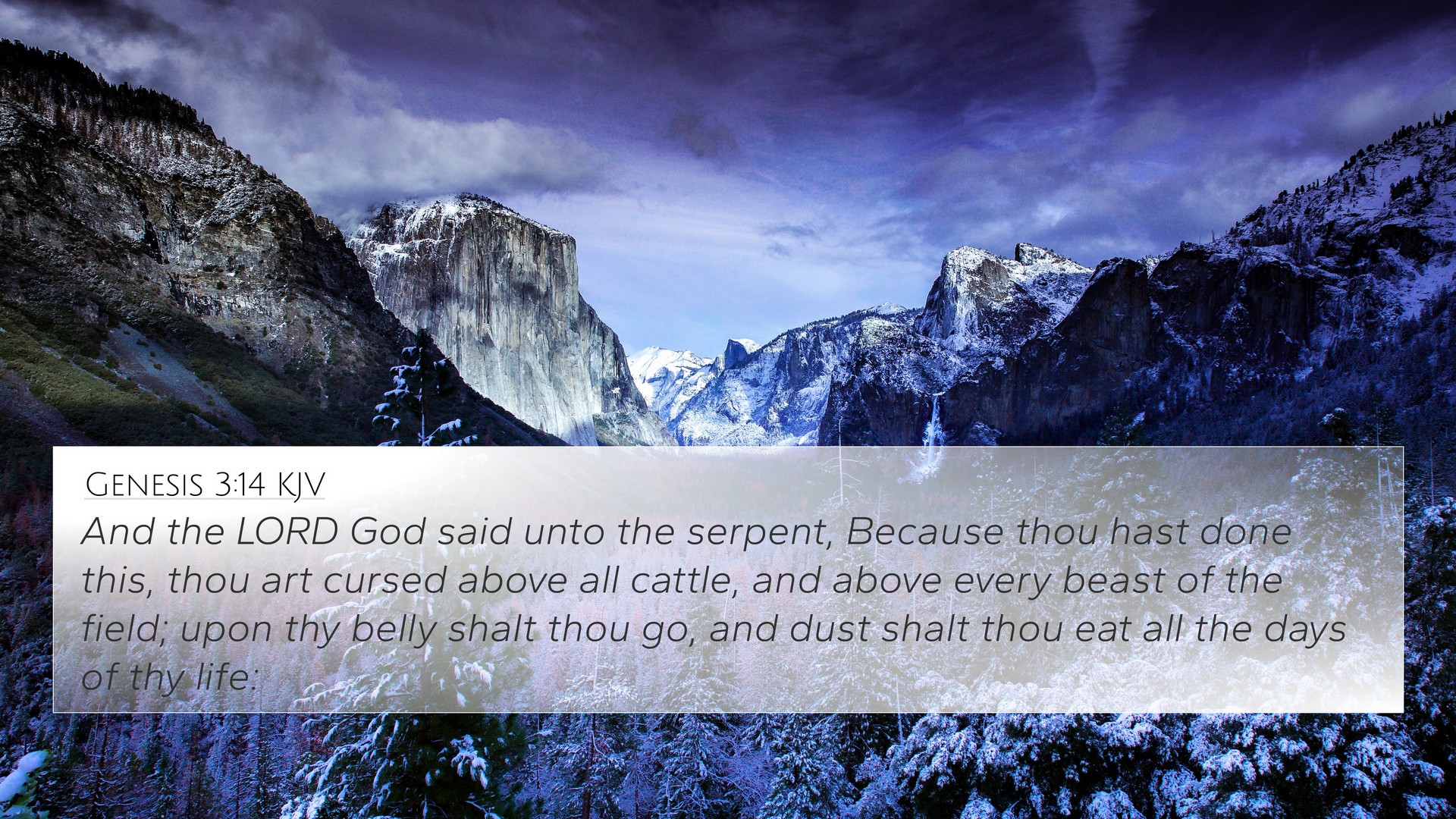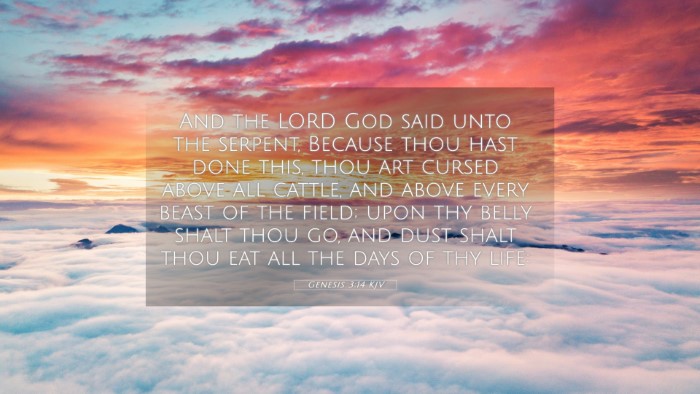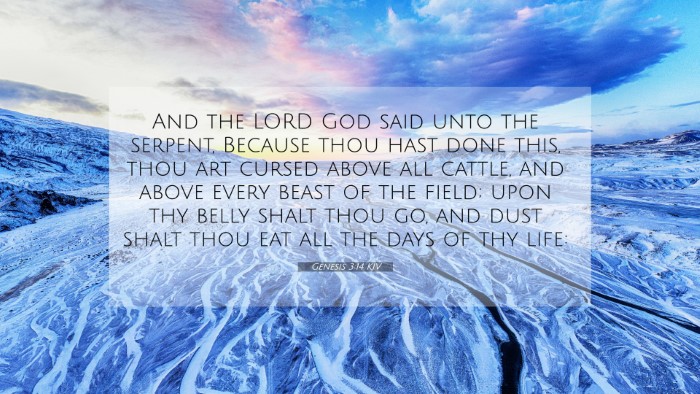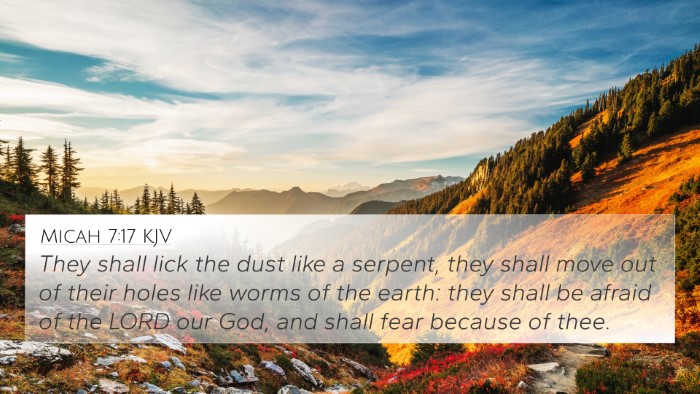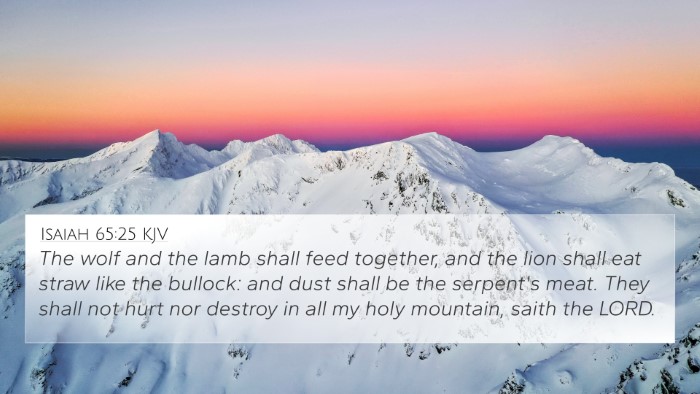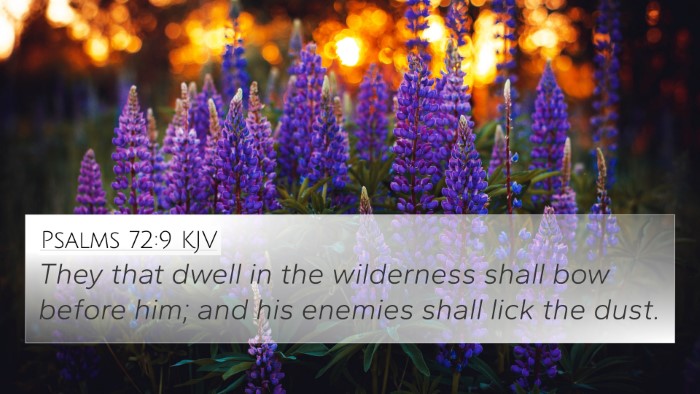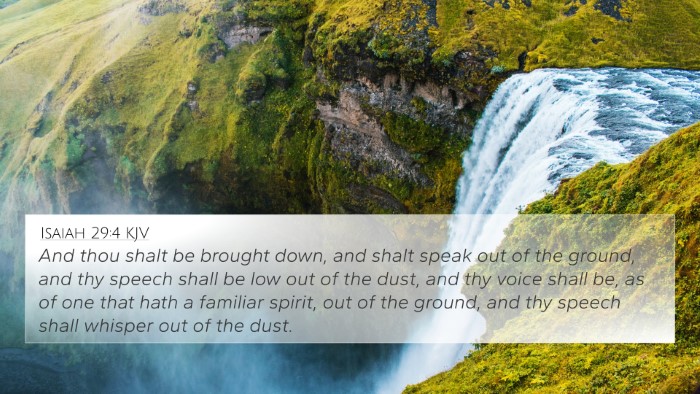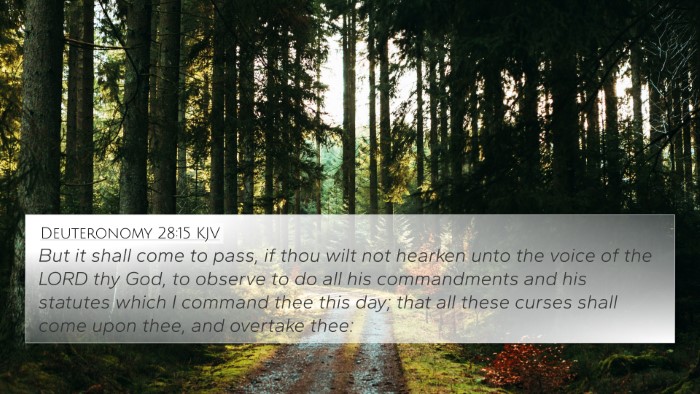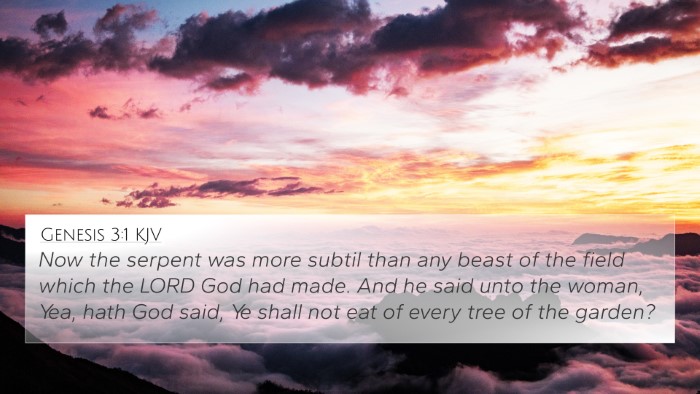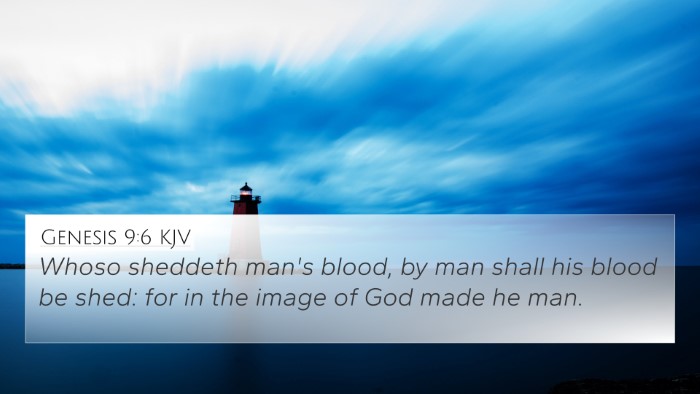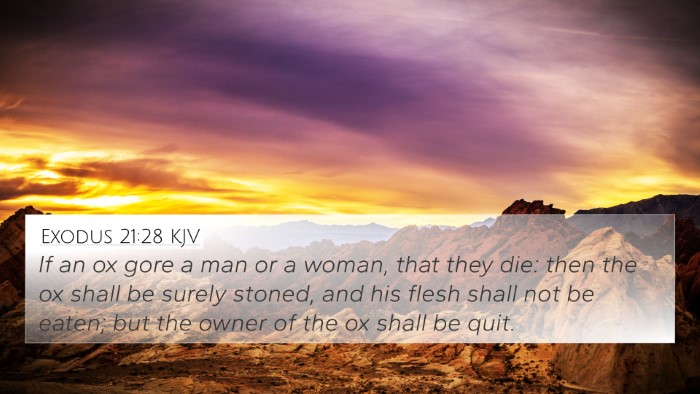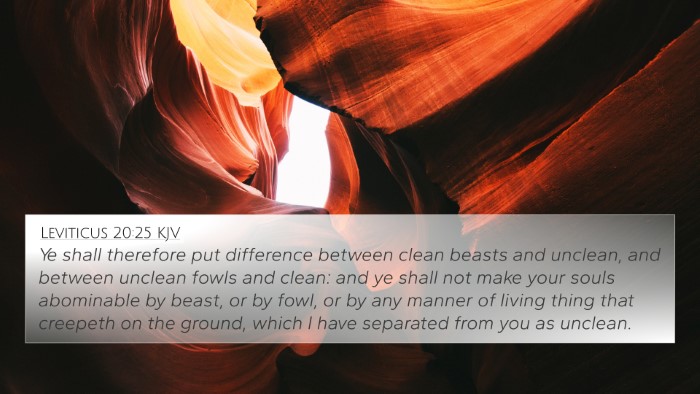Understanding Genesis 3:14
Genesis 3:14 states: "And the Lord God said unto the serpent, Because thou hast done this, thou art cursed above all cattle, and above every beast of the field; upon thy belly shalt thou go, and dust shalt thou eat all the days of thy life." This verse is pivotal in understanding the consequences of the Fall and the nature of sin.
Verse Analysis
This verse reflects God’s judgment upon the serpent, symbolizing not only the punishment for the serpent's role in the Fall of man but also establishing an ongoing enmity between humanity and evil. Various public domain commentaries provide rich insights into this significant scripture.
- Matthew Henry's Commentary: Henry highlights that the curse pronounced upon the serpent symbolizes the ultimate defeat of the devil. The serpent being cursed "above all cattle" signifies its lowly and disgraceful position among creatures.
- Albert Barnes' Notes: Barnes describes that the serpent's punishment includes a transformation, moving from upright to crawling on its belly. This serves as a lasting reminder of the consequences of deceit and rebellion against God.
- Adam Clarke's Commentary: Clarke emphasizes the spiritual implications of the serpent's curse, interpreting it as a representation of sin’s nature, which ultimately leads to degradation and destruction.
Comparative Bible Verse Analysis
When cross-referencing this verse with others in the Bible, we find its themes resonate throughout Scripture.
Key Cross References
- Revelation 12:9: “And the great dragon was cast out, that old serpent, called the Devil, and Satan, which deceiveth the whole world...” - This underscores the ongoing role of the serpent as a deceiver.
- Romans 16:20: “And the God of peace shall bruise Satan under your feet shortly...” - Suggests God’s ultimate victory over evil.
- John 3:14-15: “And as Moses lifted up the serpent in the wilderness, even so must the Son of man be lifted up...” - This connection highlights the symbolic nature of the serpent in relation to salvation.
- Genesis 4:7: “If thou doest well, shalt thou not be accepted? And if thou doest not well, sin lieth at the door...” - Implies the constant struggle between good and evil that began with the Fall.
- 1 Peter 5:8: “Be sober, be vigilant; because your adversary the devil, as a roaring lion, walketh about, seeking whom he may devour.” - Reflects the active role of the serpent in humanity's spiritual journey.
- Isaiah 65:25: “The wolf and the lamb shall feed together, and the lion shall eat straw like the bullock: and dust shall be the serpent's meat...” - Affirms the ultimate restoration where the serpent’s curse will be fully realized in the new creation.
- James 4:7: “Submit yourselves therefore to God. Resist the devil, and he will flee from you.” - Encourages active resistance against the serpent’s influence.
- Hebrews 2:14: “Forasmuch then as the children are partakers of flesh and blood, he also himself likewise took part of the same; that through death he might destroy him that had the power of death, that is, the devil.” - This verse directly ties back to the curse on the serpent and the victory over sin and death.
Exploring Thematic Connections
The themes presented in Genesis 3:14 extend beyond the narrative of the Fall into broader theological discussions throughout the Bible:
- Sin and Redemption: The serpent’s curse initiates the narrative of sin, requiring the eventual need for redemption through Christ.
- The Nature of Evil: The transformation of the serpent serves as an archetype for sin's effect on creation, illustrating its disgrace and defeat.
- Inter-Biblical Dialogue: Understanding Genesis 3:14 through the lens of New Testament texts demonstrates a coherent biblical theology regarding sin, suffering, and salvation.
Using Bible Cross-References
By employing tools for Bible cross-referencing such as concordances and reference guides, believers can deepen their understanding of Genesis 3:14. One can explore connections not only within Genesis but also with prophetic texts, psalms, and apostolic letters.
Practical Steps for Cross-Referencing
- Bible Cross-Reference Guide: Utilize guides that map out thematic connections between verses to enhance your study.
- Identifying Connections: Look for parallels between the Old and New Testament, especially in themes such as redemption and the nature of evil.
- Comparative Studies: Engage in studies that highlight similarities between various Biblical texts to uncover deeper meanings.
Conclusion
Genesis 3:14 serves not only as a narrative of judgment but also initiates a profound theological discussion that resonates throughout the entirety of Scripture. Through careful examination and cross-referencing, one can gain insights into God's plan for humanity's redemption and the nature of spiritual conflict.
